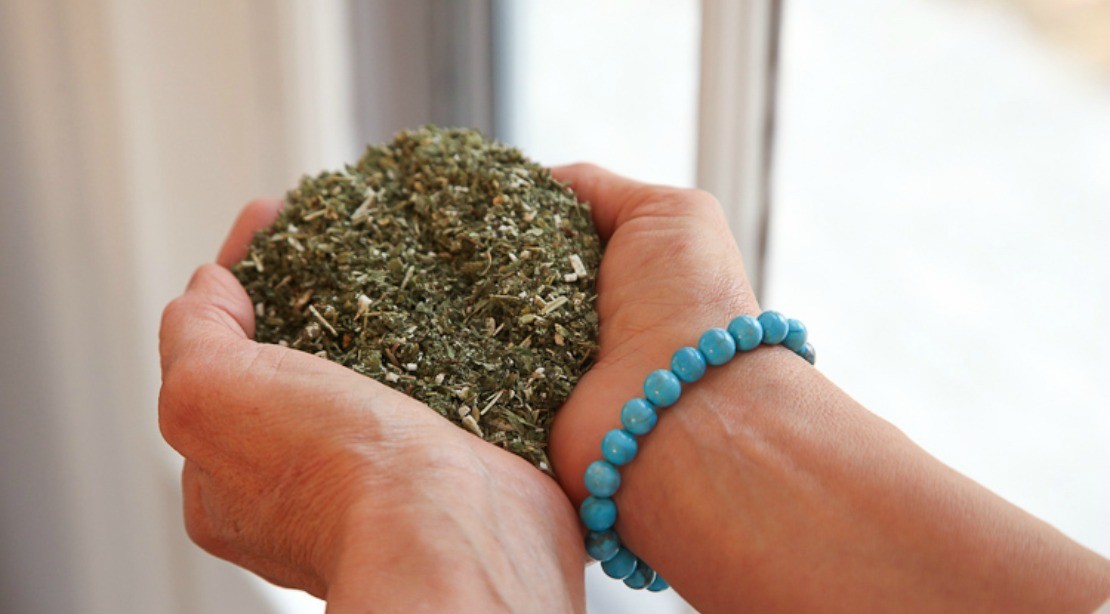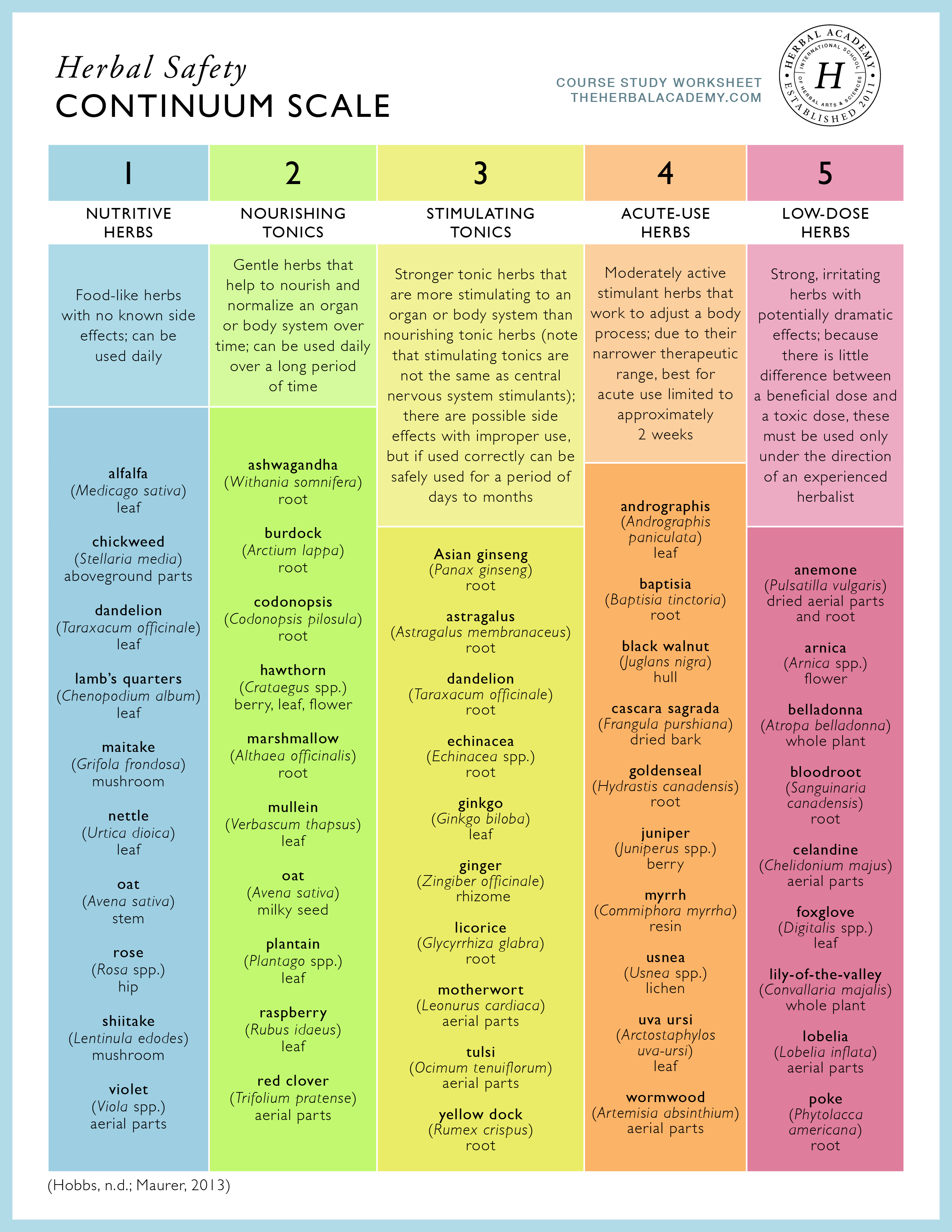
The Herb Safety Continuum Scale
Herbal safety is an important consideration when it comes to determining which herbs to use, and it’s important to thoroughly research the safety concerns of an herb or any contraindications in reputable herbal sources. You can use the herbal safety continuum scale to help determine and visualize where an herb lies on the safety spectrum.
The herbal safety continuum scale ranks classes of herbs according to how gentle or potent they are on a scale of 1 to 5—1 being the most gentle, and 5 being the most potent (Hobbs, n.d.; Maurer, 2013). The higher an herb is on the scale, the more research and experience you’ll need to use the herb wisely and safely. Herbs with a rating of 1 are gentle and nutritious herbs safe for daily use, while those with a rating of 5 should only be used under the guidance of an experienced practitioner.

- Nutritive herbs: Food-like herbs with no known side effects; can be used daily for their rich vitamin and mineral content, thus boosting nutritional intake.
- Nourishing tonics: Gentle herbs that help to nourish and normalize an organ or body system over time; can be used daily over a long period of time to help regenerate and rejuvenate body systems in need of support.
- Stimulating tonics: Stronger tonic herbs that are more stimulating to an organ or body system (note these are not the same as central nervous system stimulants); there are possible side effects with improper use, but if used correctly can be safely used for a period of days to months.
- Acute-use herbs: Moderately active stimulant herbs that work to adjust a body process; due to their narrower therapeutic range, best for acute use limited to approximately two weeks.
- Low-dose herbs: Strong, irritating herbs with potentially dramatic effects; because there is little difference between a therapeutic dose and a toxic dose (Hobbs, n.d.), these must be used only under the direction of an experienced herbalist.
For the beginning herbalist and/or those looking for herbs to include in daily wellness routines, look to nutritive herbs and nourishing tonics to enrich the diet and boost nourishment to particular body systems or organs. As long as there are no contraindications or safety concerns for the individual, these are typically very safe herbs and offer the opportunity to support wellness from a nutritional standpoint, potentially having a big impact on imbalances and/or helping us feel more supported as a whole.
REFERENCES:
Maurer, S. (2013). Sacred Plant Medicine apprenticeship class handouts. Gaia School of Healing and Earth Education.
Hobbs, C. (n.d.) Herbal medicine: Specific and tonic immune herbs exploring a practical system of Western herbalism. Retrieved from http://www.healthy.net/Health/Article/Specific_and_Tonic_Immune_Herbs_Exploring_a_Practical_System_of_Western_Herbalism/960









